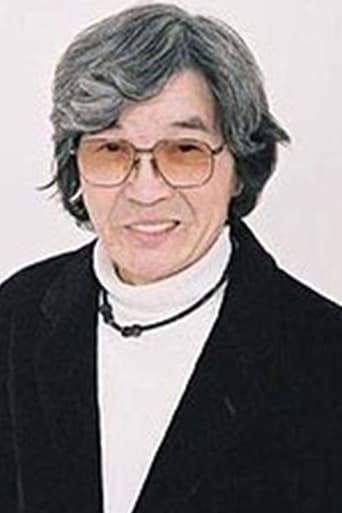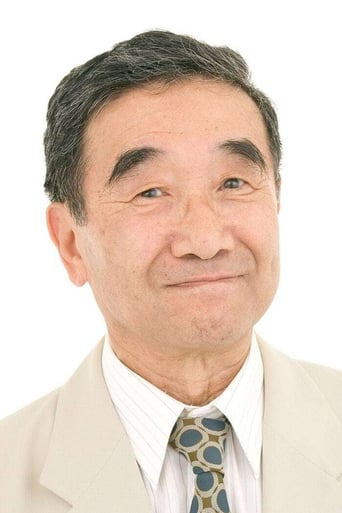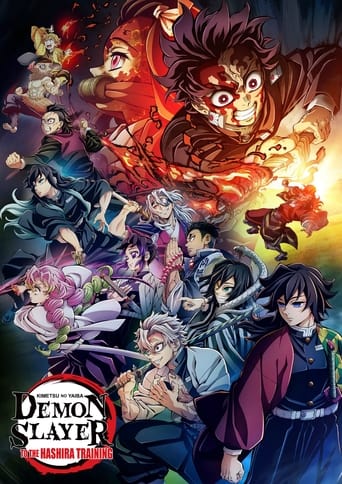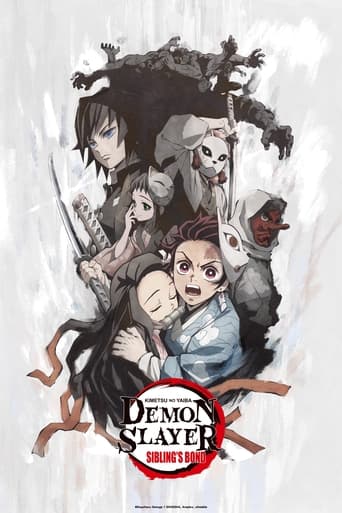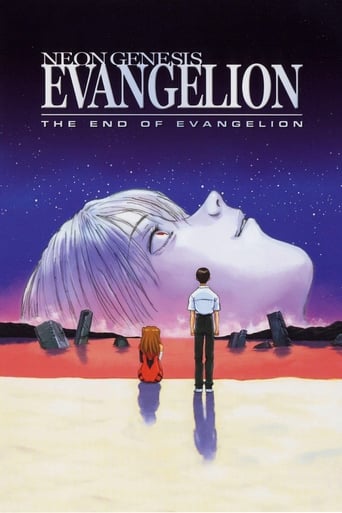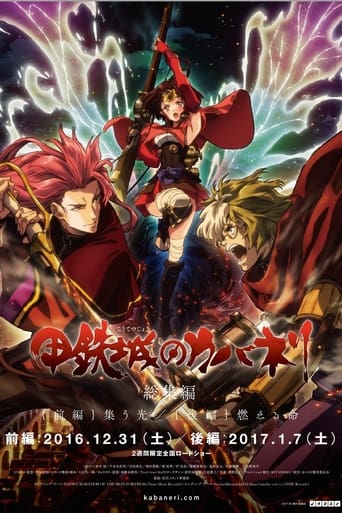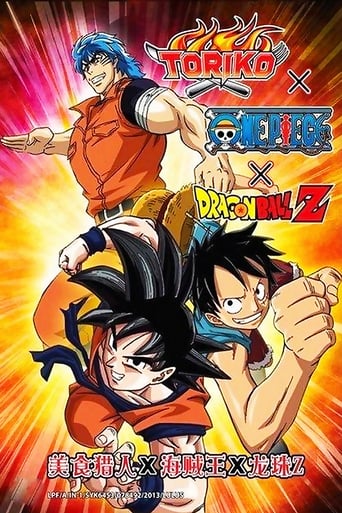Kattiera Nana
I think this is a new genre that they're all sort of working their way through it and haven't got all the kinks worked out yet but it's a genre that works for me.
XoWizIama
Excellent adaptation.
FuzzyTagz
If the ambition is to provide two hours of instantly forgettable, popcorn-munching escapism, it succeeds.
Deanna
There are moments in this movie where the great movie it could've been peek out... They're fleeting, here, but they're worth savoring, and they happen often enough to make it worth your while.
Irishchatter
I even liked the animals who visited Gauche and made him play songs for them. It's very good to see an anime like this with such great art and that is very uplifting. Bravo to all involved!
xxbrennan
*Summary is at the top, Review is at bottom* Goshu the Cellist is a great fantasy that tells the story of Goshu, a cellist, and how he improves his cello playing by learning from four different animals, or spirits. Accompanying the story is an amazing score and beautiful, detailed artwork.The story begins with Goshu and the orchestra he is playing in practicing for a recital. His maestro begins to get frustrated with his lack of emotion and out of rhythm playing.Goshu later goes home and begins to practice and hears a knock at his door and opens it to find a Cat, probably prototype artwork for The Cat Returns and Whisper of the Heart. This Cat requests that he play a piece, but Goshu refuses and plays "The Indian Tiger Hunt". This makes the Cat fly around the room and hit his head, among other things.The next night he is visited by a Cuckoo, who asks him to play the scale so he can practice. Goshu does this, reluctantly, and goes into a dreamlike state where he is in a clearing in the forest and the Cuckoo is flying into the sky, which is later broken when he thinks of Beethoven as a bird. He begins to yell at the Cuckoo and makes the him leave.A young Raccoon (possibly another prototype for Pom Poko) is the next animal, or spirit, to visit Goshu. The Raccoon asks Goshu to play a song so he can play the drums on Goshu's cello. The first time Goshu plays it, the Raccoon tells Goshu that whenever he plays the second string, he feels like he is stumbling. Goshu then plays the song again and goes into another dream, where he and the Raccoon are playing on a moonlit field. It soon becomes morning and the Raccoon leaves.Goshu's last visit comes from a Mouse and her child. She tells him that her child is dying and Goshu is the only one who can cure him. Goshu proclaims that he is not a doctor, therefore can not help. He soon finds from the Mouse that his music cures the animals, and that whenever an animal gets sick, they go under his floorboards and are cured almost instantly. Goshu agrees to play, and the child mouse is cured.You then see Goshu performing with his orchestra. When they are finished, the maestro begins to cry. They are asked for an encore, so the maestro sends Goshu to play. Goshu thinks that this is to make fun of him, so he plays "The Indian Tiger Hunt" again. Even though he played this piece of music, everyone gave him a standing ovation. The maestro then comments on how he improved so much in just 10 days. The whole orchestra then goes to celebrate.*Review* Goshu the Cellist is a wonderful piece of art. You could expect something this great from Takahata, and it also shows prototypes for the art in Pom Poko and The Cat Returns. The movie is filled with great artwork and music, and is very relaxing and gently paced. Although short, it will stick with you for a long time. This movie is hard to come across, so don't pass up the opportunity. You will not regret it.
re-eino
Takahata begins the story of a cellist having difficulties with his performance within an orchestra. They are training Beethoven for a music competition as the deadline is closing. The conductor seems to have problems pinpointing the exact problem with Goshu's play. First he tells he's lacking behind, then he suggests he's out of tune and finally he explains that he has no sense of expression. I can't but wonder this kind of indecisiveness in supposed to be professional orchestra leader. Goshu trains very hard by himself, but that doesn't help him to get better in sync with other players in the orchestra (somewhat a logical conclusion).While Goshu is training, the animals start to visit him, asking him to play for them. First one is the cat telling him to play something different for a change. He is immediately hostile toward the animal and decides to torture the cat with a simple tune called 'Indian tiger hunt'. The cat is now in terrible agony and tries to escape the torture. Next one in line is a woodpecker. He is still irritated, but now he agrees to play two notes over again with the bird for a while until he loses his temper again. Goshu (the musician) doesn't seem to understand when the bird is explaining him that two notes always sound a little different when played repeatedly and frightens the bird away. The third animal is a raccoon playing drums with him. It tells Goshu that he is not in sync with drums and then it leaves. Finally he cures a mouse pup by putting it inside the cello and playing some random tune. His reactions towards the animals are now less hostile and he has mastered his technical and expressionistic difficulties by these exercises. In the competition Goshu exceeds all expectations made for him by somehow surpassing all other players of the orchestra also now in sync with them. He's asked to play an encore and not yet convinced of his improved skills decides to play the 'Indian tiger hunt', clearly marked as not so much of a song. He still manages to convince everybody with his improved skills of performance even with this beginner class song.The film is supposed to tell a story about music, but it doesn't work as whole because Takahata can't decide in what part he should concentrate in. It would be easy to judge that he doesn't know much about music and decides to tell an innocent story about art of teaching instead, just masked to be a story about music. However perhaps the lessons are made so simple and incoherent just that the audience can easily follow the links of the teachings to Goshus multidimensional problems as a cellist. I think this movie would have worked better if instead of a instrument player it would have told a story about composer stuck with some piece he's been working at. It fails to be great movie because lack of depth and consideration in both dimensions of the story. It is also too short to take advantage of all the possibilities which could have been utilized. However it shows some signs of a good movie such as character development. It doesn't contain major holes even tough all the lessons that Goshu receives don't seem to fit perfectly in the greater picture. Finally it is one of the few movies that at least in part, tries to tell a story about music.It was an interesting experience for me and it shows great promise for future works of Takahata. It's also nice to see how well Takahata's skills have developed after this movie in works such as 'Grave of the fireflies' which succeeds in those aspects this movie fails at.
David Feldman
Art with a didactic agenda often fails by succeeding - once we learn the message, we lose interest in the messenger. Fortunately, the animal night spirits here disguise their lessons *for* Goshu as requests for favors *from* Goshu. They never explain themselves. Even for the viewer who gets the point before Goshu, the film will deserve at least a second viewing to appreciate the teacher's cunning.Goshu begins the film as a *mediocre* professional cellist (so his playing may already sound pretty good to a child beginner!). He already shows dedication to practicing; the film carries a message more subtle than the mere value of hard work.The spirits aim to teach the higher values of music. Indeed it takes a pretty good ear, at first, even to hear the difference they make. Sufficient ambiguity surrounds their didactic message that no one should find the film heavy handed. As subtle as its message about music itself, the movie really speaks to the art of teaching (hence didactic of the second order!).I suspect that a Japanese viewer will immediately understand the animals as (potentially menacing) supernatural spirits (rather like denizens of dreams), and thus understand Goshu's initial violent hostility to his actually friendly visitors. If one misreads the visitors as mere (fantasy) animals, Goshu's reactions to them just seem monstrous. In other words Disney would expect you to suspend disbelief in the presence of a talking cat (not to mention a person who so quickly finds it natural to talk to a talking cat), but Goshu knows cats don't talk, though spirits, manifestations of our inner demons, very well may. A young Western child watching this film might find it useful or even comforting to have this explained in advance!


